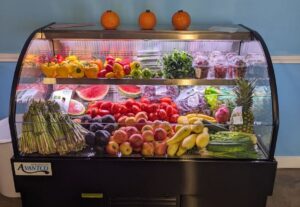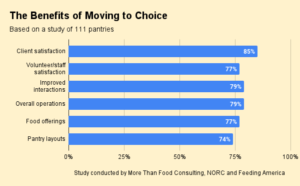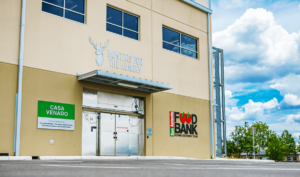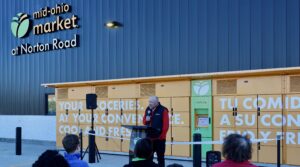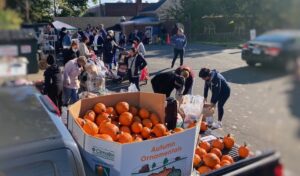Most people who work at a food pantry can relate to this scenario: a shortage of something essential like peanut butter leads to a trip to the grocery store, just in time for the next distribution.
Last-minute scrambles like these may be common, but they’re also “a terrible use of money and time,” said Robin Lamott Sparks, Executive Director of End Hunger Connecticut!, a statewide anti-hunger advocacy organization.
As a remedy, EHC! has begun organizing a cooperative purchasing program to help food pantries in Connecticut pool their buying power. Through collective purchasing, pantries and other food programs can secure more favorable and steady contracts with regional food wholesalers.

“We’re enabling small pantries to be part of a really large network,” Lamott Sparks said.
Connecticut is not alone in seeking better coordination between pantries. A related approach has also been beneficial for several large pantries in New York City, led by the West Side Campaign Against Hunger, which were able to reduce food purchasing costs by nearly 20% simply by pooling information about purchase prices.
Even before serious disruptions to food supply chains occurred during the pandemic, food pantries in Connecticut were finding it difficult to be efficient in their food sourcing. EHC! found that only a portion of the food distributed by pantries every month usually comes from regional food banks or private donations, forcing pantries to purchase up to 30% of their food from the grocery store at higher prices.
Discounts are hard to come by because pantries can’t often meet the minimum amounts required. Even if they do, storage can be a problem. Cooperative purchasing fills a “shopping gap” that food pantries have been experiencing, said Jill Meyerhoff, Executive Director of FISH of Greater New Haven/Pantry to Pantry, in a press release. She expects that shopping, ordering and receiving food will become much easier through the cooperative purchasing program.
“This has been a need that’s gone unmet,” Lamott Sparks said.
Under the program, EHC! will tap the experience of a veteran of the private-sector food supply chain to coordinate joint sourcing of food directly from wholesalers. A handful of area food suppliers that serve local restaurants and groceries are already on board, while others have pledged to jump in once the program is up and running.
Pantries will benefit from some of the standard practices enjoyed by restaurants and other private food purchasers. For example, the purchase price of the food will also include its delivery, a big selling point for pantries that typically make a run to the food bank to get food.
Another concept borrowed from the private sector is “just in time” food deliveries. Food would arrive just before distributions, hopefully negating the need for it to be stored. “If you do it right, you don’t have to worry about warehousing,” Lamott Sparks said. “The ordering becomes the warehouse, which is what restaurants do.”
Relationships forged during pandemic will help to operationalize the network. A $250,000 grant from ACME Market Foundation, awarded last month, is kickstarting the initiative, which will include a system for placing orders.
The cooperative purchasing is open to any food pantry, soup kitchen, mutual aid society or program in the state that gets food to people. EHC! has loosely estimated that there may be 1,200 such pantries and programs, many of which are not affiliated with any of the regional food banks.
While EHC! is a strong advocate for SNAP — fielding more than 20,000 inquiries for SNAP assistance through its SNAP call center from October 2019 through September 2020 — it also views pantries as trusted places for meeting the immediate needs of food-insecure clients. “We’re a big believer in SNAP, but we’ve got to meet people where they’re at right now,” Lamott Sparks said.
Like what you’re reading?
Support Food Bank News


